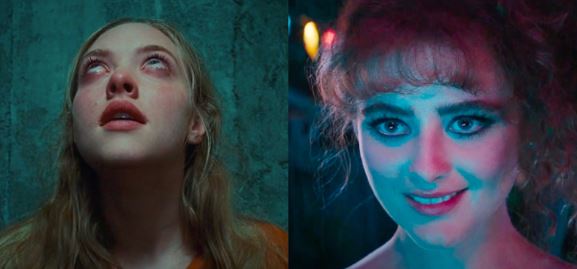From ‘Jennifer’s Body’ to ‘Lisa Frankenstein’: Why Do Critics Ignore Camp?

“The type of movie that’ll only get the appreciation it deserves in 5 years,” says the current most liked Letterboxd review of Zelda Williams’ “Lisa Frankenstein.” And, while this is disappointing, they are absolutely right: Another genius work of Diablo Cody’s has been shelved until further notice.
In fact, this is a trend we see often. Until the right niche audience picks up on these films, they are regarded as box office bombs and cast aside. But why does this happen? According to screenwriter Diablo Cody, marketing may be, at least partly, the culprit.
When “Jennifer’s Body,” Cody’s teen horror-comedy dripping with camp was first released in 2009, it was reviled by critics and audiences alike. However, almost a decade later, media began to pick up on a new wave of opinions on the film, some even going so far as to refer to the film as a Gen Z cult classic. In a 2018 interview with Vox, Cody states that the film was “marketed all wrong.” She fought with executives who wanted to market the movie exclusively to men who thought Megan Fox was hot from Michael Bay’s “Transformers” series, with no attempt to tap into the market of young women who could relate to some of the more serious themes. Thus, the film was received as “Twilight for boys,” and that was that.
With “Lisa Frankenstein,” this same marketing mistake appears to have been avoided. The film seems to have been marketed almost exclusively to women, with the tagline, “If you can’t meet your perfect boyfriend… make him.” Despite this, critics still feel overall the same way about Lisa Frankenstein as they did about Jennifer’s Body.
A potentially telling difference to note here, however, is the disparity in audience scores between the two films. While “Jennifer’s Body,” even after its resurgence, sits at a 35% on Rotten Tomatoes, “Lisa Frankenstein,” comparatively, is at a whopping 82%. Clearly, the critics and the audiences are in disagreement over this one. What critics view as “uneven,” “erratic,” and “over-the-top,” audiences viewed as exciting, campy, and, as one audience reviewer put it, “Heathers meets Edward Scissorhands.” So where does this disconnect come from?
“It’s like camp doesn’t register in some brains,” says critic EJ Moreno, in a 2021 article for Flickering Myth. People are afraid of the word “camp,” he notes, both in describing their own art as well as someone else’s. They take “camp” as a synonym for “bad,” so describing a film as such is taken as an inherent insult, which it shouldn’t be! Camp is flashy, fun, and definitely not for everyone, but that doesn’t make it inherently inferior. Zack Snyder, according to Moreno, is an “incredibly campy filmmaker,” but referring to him as such ruffles the feathers of both people who think he is a cinematic master, and those who think he makes movies that are too serious and gritty for their tastes.
Some also seem unable to contend with the fact that something not being “for” them does not disqualify it from being for someone else. Not being the target audience for a film does not mean there is no target audience, or no purpose in it being made. Moreno makes a very important point in indicating that most of the critics asking “Who is this for?” about campy movies are mainly heterosexual men, who themselves are able to “accept camp in certain regards [namely, these superhero “bro camp” movies] but will ignore it when it comes to more queer/light-hearted camp.”
As a Vox review of “May December” puts it, “Camp is closely related to queer identity and performance,” which ties seamlessly back to the Diablo Cody Cinematic Universe. “Jennifer’s Body” is, at its core, about the performance of being female and queer at a young age, and how difficult these converging identities can make it to properly process violent traumas. However, these themes are presented in an over-the-top ironic, campy manner. Those who were expecting to see a genuine flick about a hot high school vampire were obviously disappointed, but they were set up to be by its lackluster marketing.
A decade later, young people of all identities began to see the film for what it was, and took comfort in the non-serious way these ideas were presented. Camp is the language of Gen Z, so it is no surprise that once they tuned into the wonderful absurdity, the film’s popularity spread like wildfire.
“Lisa Frankenstein” has the chance to have the same impact way earlier in its lifetime as a film. Like “Jennifer’s Body,” it stars a complexly traumatized and flawed leading woman who can serve as a comforting reflection of (but hopefully not a role model to) many young women who have experienced similar difficulties in life. Destigmatizing complex ways of processing trauma is very important work. We should be rewarding that, not hiding it on a dusty shelf, waiting for the next generation to pick up on its impact a decade later because we can’t stand to see women have fun in the present tense.
While the two films take place in the same universe, hopefully we don’t have to wait as long for “Lisa Frankenstein” to achieve cult classic status as we did for “Jennifer’s Body.”
